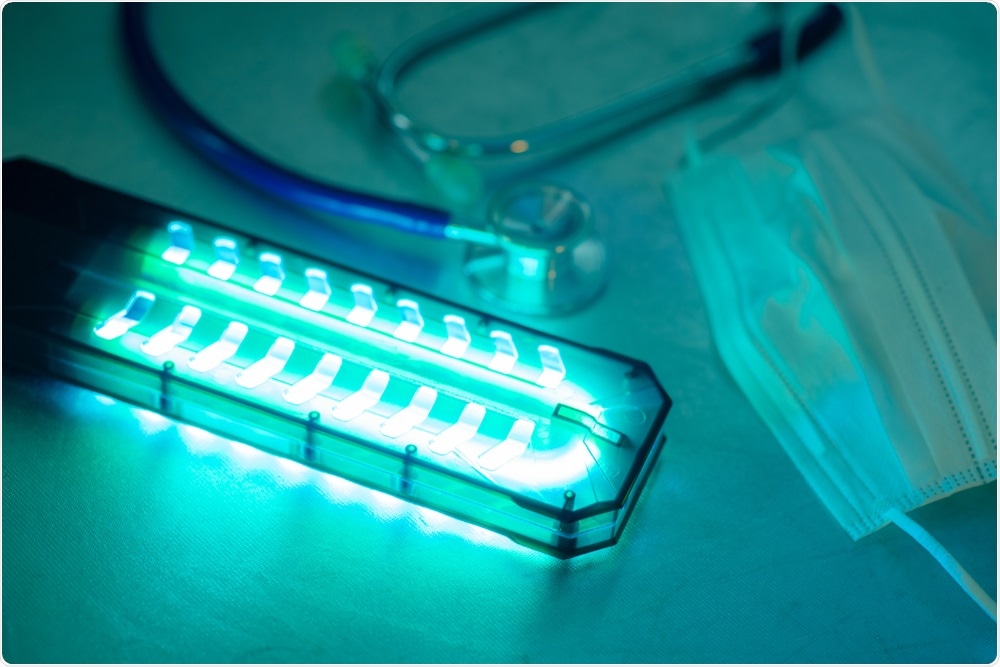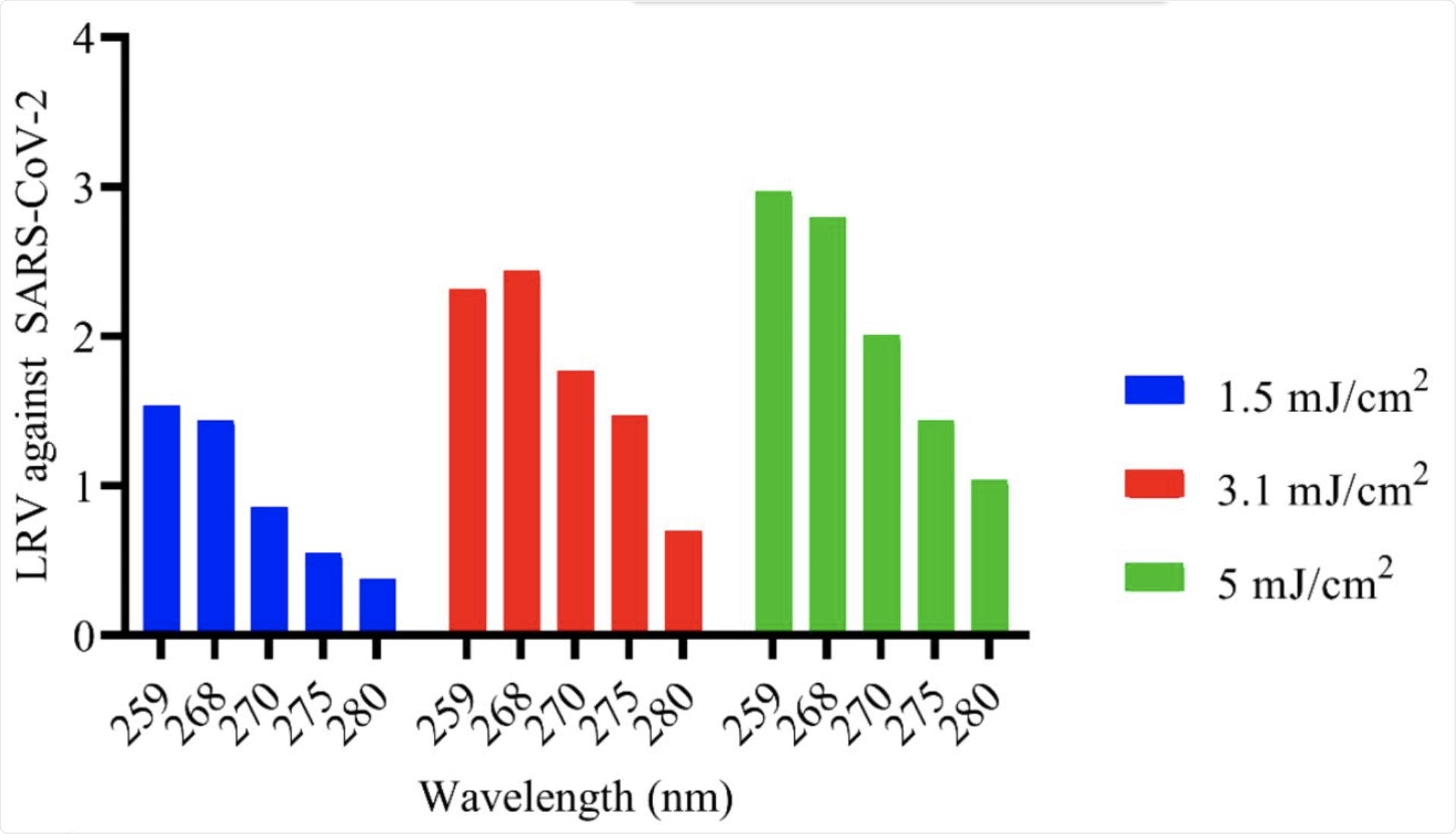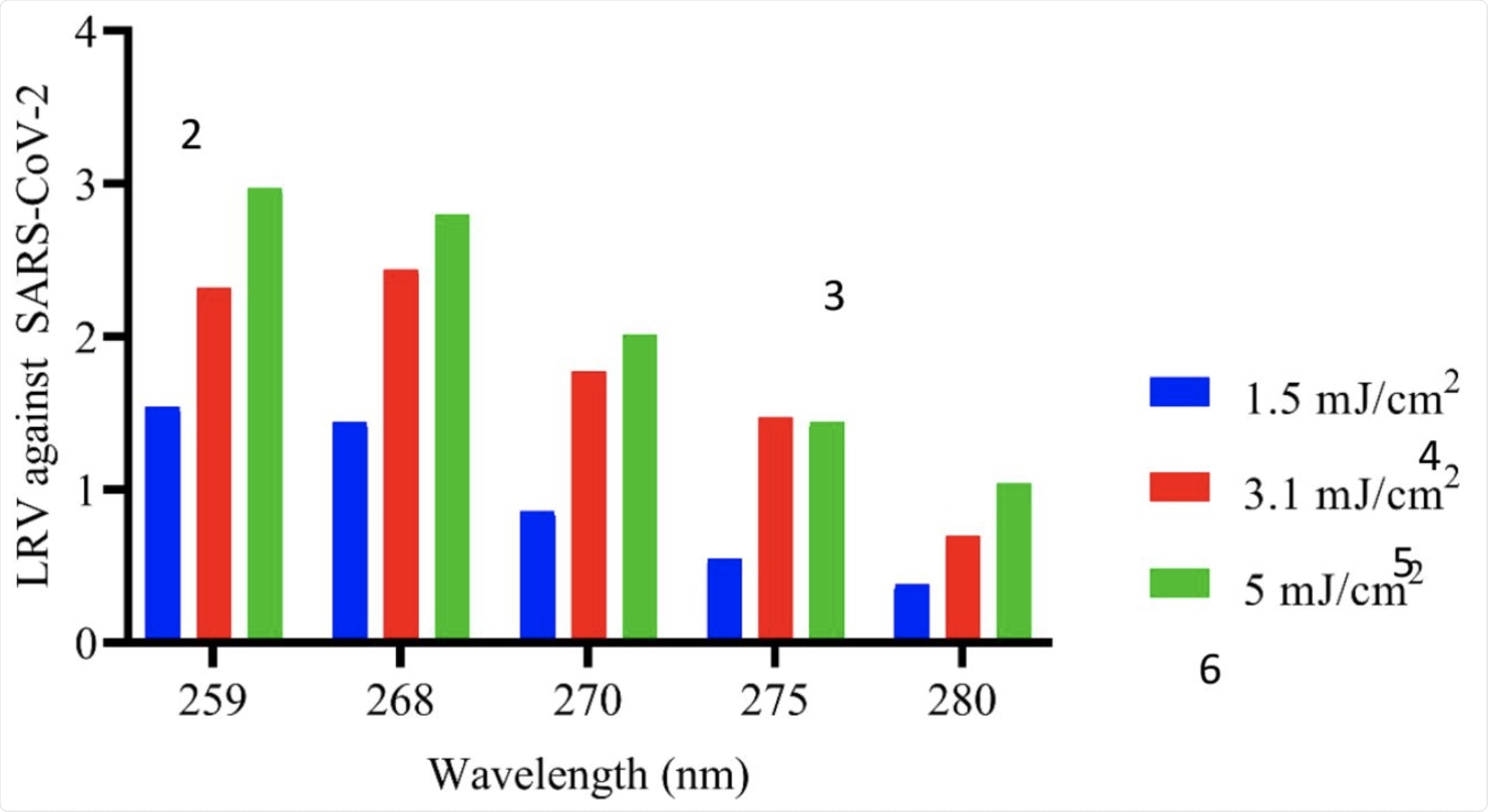The severe acute respiratory syndrome coronavirus 2 (SARS-CoV-2), which is the virus responsible for the coronavirus disease 2019 (COVID-19), has infected more than 186 million people worldwide and caused the deaths of almost 4 million. COVID-19 has therefore emerged as a focal point in an enormous amount of research endeavors around the world looking to advance the development of effective therapeutics, drugs, and vaccines that can target SARS-CoV-2.
 Study: Disinfection of SARS-CoV-2 using UVC reveals wavelength sensitivity contributes towards rapid virucidal activity. Image Credit: Nor Gal / Shutterstock.com
Study: Disinfection of SARS-CoV-2 using UVC reveals wavelength sensitivity contributes towards rapid virucidal activity. Image Credit: Nor Gal / Shutterstock.com

 This news article was a review of a preliminary scientific report that had not undergone peer-review at the time of publication. Since its initial publication, the scientific report has now been peer reviewed and accepted for publication in a Scientific Journal. Links to the preliminary and peer-reviewed reports are available in the Sources section at the bottom of this article. View Sources
This news article was a review of a preliminary scientific report that had not undergone peer-review at the time of publication. Since its initial publication, the scientific report has now been peer reviewed and accepted for publication in a Scientific Journal. Links to the preliminary and peer-reviewed reports are available in the Sources section at the bottom of this article. View Sources
UV disinfection
SARS-CoV-2 has been found to be highly susceptible to ultraviolet (UV) light, which has led to further investigations on the use of UV radiation as a potential disinfectant.
More specifically, this viral inactivation has been achieved at wavelengths between 100 and 280 nanometers (nm), which is otherwise known as the UVC range. Disinfection of viruses by UV light is due to the photochemical damage that UV causes to nucleic acids, which can result in a reduction or inhibition of viral replication. In addition to UVC products being small and quiet, they are also efficient methods to disinfect both surfaces and substances in the air.
Although the efficacy of UV treatment for room sanitization has been confirmed for its use in preventing hospital-acquired infections, its utility for inactivating SARS-CoV-2 has not yet been confirmed. To this end, a recent study published on the preprint server medRxiv* describes the disinfection of SARS-CoV-2 using UVC irradiation at different wavelengths.
UVC and SARS-CoV-2
Recent studies have established that SARS-CoV-2 can be effectively inactivated by UVC irradiation at 254 nm using a commercial lamp. Another in vitro study found that shorter wavelengths were more effective at inactivating SARS-CoV-2 as compared to longer wavelengths (265nm>280nm>300nm). These findings thereby support the use of UVC radiation on a larger scale for the disinfection of SARS-CoV-2.
Despite these findings, the inactivation profile of UVC for SARS-CoV-2 has yet to be established. This information is imperative for accurately determining the amount of UV light needed to disinfect surfaces.
In the current study, the researchers investigated various UVC wavelengths to determine the sensitivity of SARS-CoV-2 on surfaces. The ranges of UVC wavelengths that were assessed in this study included 259, 268, 270, 275, and 280 nm.
Study findings
The current study utilized two tissue culture dishes, of which one was used for irradiation and the other was used as a control. The virus which was introduced into these dishes was provided with UVC at a specific height, dose, and time. Quantification was achieved using the plaque assay method, in which the effects of different UVC wavelengths on the viral titer were measured.
Previously, the researchers demonstrated the susceptibility of SARS-CoV-2 to UVC radiation, which was found to be the most effective at 259 and 268 nm. A strong association between the wavelength and the level of inactivation of the test arrays was observed in their current study, thus confirming that inactivation had increased with UVC exposure/dose.
Ultimately, the researchers found that the UVC wavelength of 268 nm for a duration of 7 seconds successfully reduced the viral titer of SARS-CoV-2 below a detectable level.
 Effects of UVC LEDs with different peak emissions on SARS-CoV-2 (Strain USA/WA I-2020) inactivation. Inactivation efficacy of wavelengths was carried out at similar UVC doses. Inactivation of SARS-CoV-2 revealed wavelength sensitivity, with the 268 nm array obtaining comparable performance with the 259 nm.
Effects of UVC LEDs with different peak emissions on SARS-CoV-2 (Strain USA/WA I-2020) inactivation. Inactivation efficacy of wavelengths was carried out at similar UVC doses. Inactivation of SARS-CoV-2 revealed wavelength sensitivity, with the 268 nm array obtaining comparable performance with the 259 nm.
 Effects of low UVC doses on SARS-CoV-2. It was confirmed that an increase in UVC dose led to increased inactivation.
Effects of low UVC doses on SARS-CoV-2. It was confirmed that an increase in UVC dose led to increased inactivation.
Conclusion
The results of this study further confirm previous research on the efficacy of UVC for inactivating SARS-CoV-2. The use of shorter wavelengths, which were found to be the most effective at inactivating SARS-CoV-2, may easily target the virus with a lower dose, thus signifying the potential utility of this technique for mass disinfection purposes.
However, while this research has provided more insight into the optimum wavelengths needed to inactivate SARS-CoV-2, the study was conducted on dried surfaces. Therefore, further research is needed to identify the UV wavelengths that are optimal for air disinfection purposes. The researchers also acknowledge other limitations of their study, including the potential effect that varying temperatures, humidity levels, and other surface types might have on viral titers following UV treatment.
Taken together, the findings of the current study provide an insight into the inactivation profile of UVC for SARS-CoV-2. These findings are significant for the design and manufacturing process of UVC-based solutions, for which wavelength efficacy is important.

 This news article was a review of a preliminary scientific report that had not undergone peer-review at the time of publication. Since its initial publication, the scientific report has now been peer reviewed and accepted for publication in a Scientific Journal. Links to the preliminary and peer-reviewed reports are available in the Sources section at the bottom of this article. View Sources
This news article was a review of a preliminary scientific report that had not undergone peer-review at the time of publication. Since its initial publication, the scientific report has now been peer reviewed and accepted for publication in a Scientific Journal. Links to the preliminary and peer-reviewed reports are available in the Sources section at the bottom of this article. View Sources
Article Revisions
- Apr 11 2023 - The preprint preliminary research paper that this article was based upon was accepted for publication in a peer-reviewed Scientific Journal. This article was edited accordingly to include a link to the final peer-reviewed paper, now shown in the sources section.